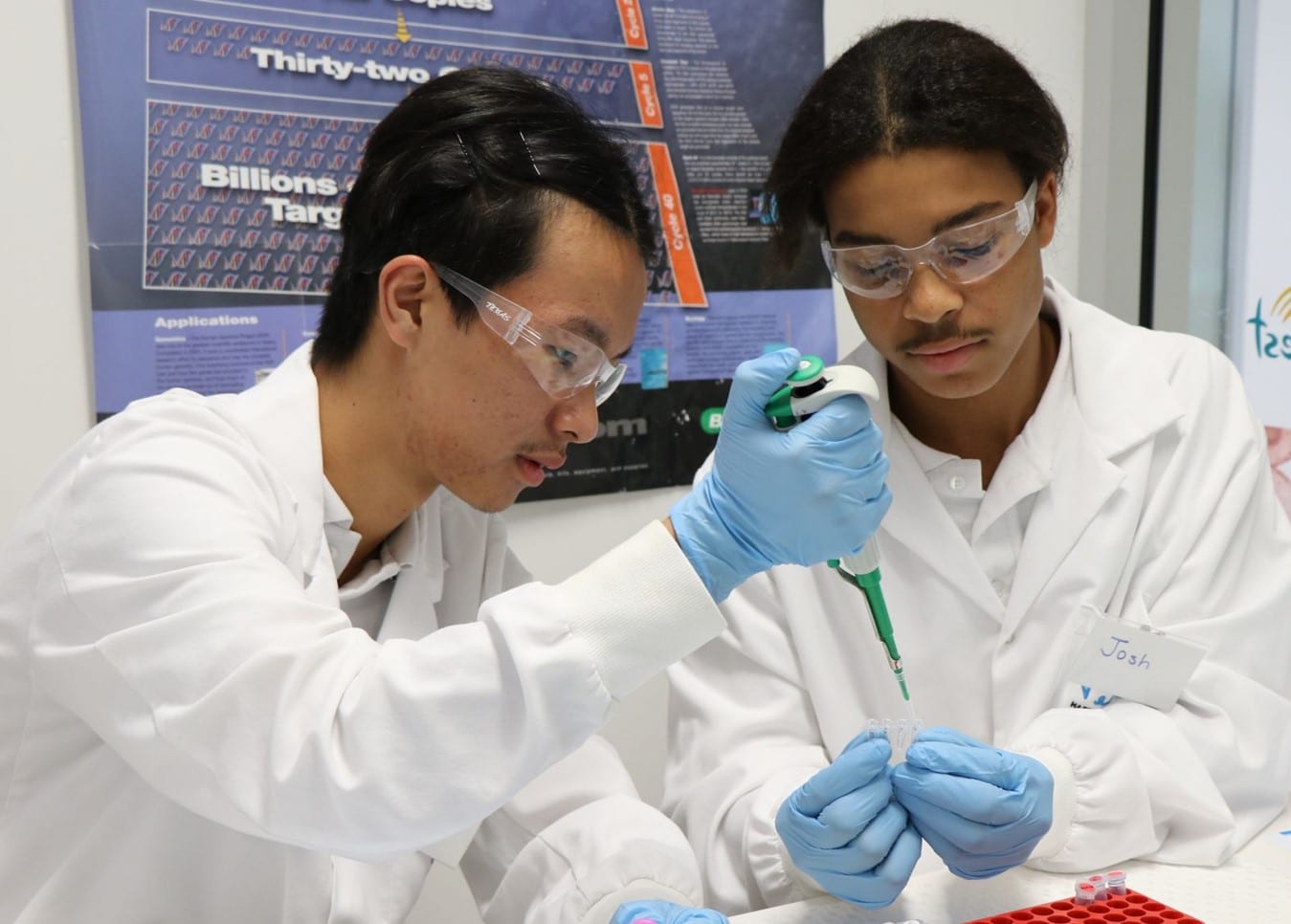Year 12: Protein Chemistry
Weekdays during school term | 9:30 am – 2:30 pm

Weekdays during school term | 9:30 am – 2:30 pm
Discover the ways we can use protein chemistry to build novel treatments for tough diseases.
Designed for Year 12 ATAR Chemistry
$50 per student (minimum 20 students)
Maximum 32 students
Explore the primary, secondary and tertiary structures of proteins along with the formation of zwitterions and the role of functional groups.
They will then head to the lab for an investigation of antibiotic-resistant proteins. Using their chemical calculation skills and an electrolytic cell, students will carry out protein electrophoresis. Replicating the process research scientists use, students will apply their analytical skills to search the Protein Data Bank for key information about their sample. Using this information, students will then modify the structure of the protein to see if they can transform it into a more effective antibiotic.
This booklet contains information about bus parking, payment and pricing, and cancellations.
Western Australian Curriculum Links
Chemistry Year 12 | Unit 4 Organic chemistry and chemical synthesis
Science Understanding
α-amino acids can be represented using a generalised structure
The sequence of ⍺-amino acids in a protein is called its primary structure
Secondary structures of proteins, (α-helix and β-pleated sheets) result from hydrogen bonding between amide and carbonyl functional groups; hydrogen bonding between amide and carbonyl functional groups within a peptide chain leads to α-helix structures while hydrogen bonding between adjacent polypeptide chains leads to β-pleated sheets
The tertiary structure of a protein (the overall three-dimensional shape) is a result of folding due to interactions between the side chains of the α-amino acid in the polypeptide, including disulfide bridges, hydrogen bonding, dipole-dipole interactions, dispersion forces and ionic interactions
Science as a Human Endeavour
The Protein Data Bank (PDB) houses an international repository of structural data of proteins. The information is accessed and contributed to by scientists worldwide. The function of a protein is closely linked to its structure.
Science Inquiry Skills
Conduct investigations safely, competently and methodically for the collection of valid and reliable data.